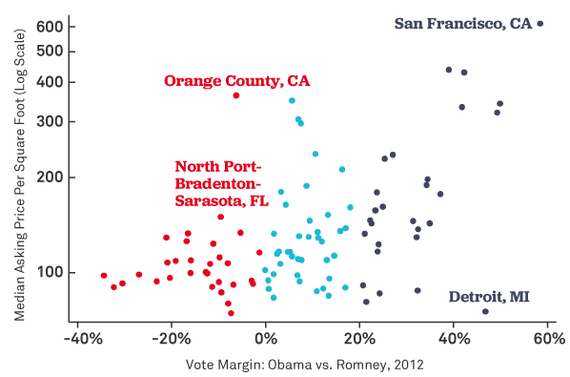Five members of Congress, who were involved with the enactment of the Affordable Care Act, have published a WaPo Op-Ed accusing the backers of the Halbig challenge of “cherry-picking” the legislative history of the law. The Op-Ed claims that since they were there, they know what is *really* in the law:
For some time, I have been on a Hobby Horse about members of congress filing briefs in court explaining what they (and by implication Congress as a whole) meant when the law was voted on.
I expressed these concerns when Senators McCain, Graham, and Ayotte to intervene in Hedges v. Obama (see here, here, and here), and when Senator McConnell intervened in the recess appointment case (here). I noted similar objections when 6 Democratic members of Congress, who were involved in steering the Affordable Care Act through the legislative gauntlet in 2009 and 2010, filed a brief in Halbig v. Sebelius.
Why do I find these briefs so unhelpful? Because Congress’s role in the lawmaking part ends at bicameralism. They have many opportunities to shape the law: (1) Draft a bill, (2) hopefully read it (though that was not done with Obamacare), (3) add whatever legislative history they deem necessary (it isn’t hard), and (4) vote on it. That’s it. Everything that comes after is post-enactment legislative history–the least reliable form of history, which is prone to self-serving statement to support one cause or another. When members of Congress file briefs in this manner, courts should be very skeptical.
This dynamic is heightened in the context of Obamacare for several reasons. The bill was drafted behind closed doors in the Senate. The bill, which no one could have conceivably read (Max Baucus admitted as much), was only a draft. It was not meant to be the final version. Only after Scott Brown won the election in Massachusetts, and the filibuster came back on the table, were the Democrats forced to ram the bill through the House, and send it back to the Senate through the reconciliation process. No conference was held to even add to the legislative history. So, the democratic process suffered with respect to (1) drafting, (2) reading, and (3) legislative history, because health insurance. The only thing we did get, was a bill that passed both houses (kind of) and was sent to the President. And that’s all we get– and all courts have to understand it.
Yet, the Op-Ed professes that their position is correct, because they were there, even though they were there, nothing they said or wrote supports their position.
This interpretation is wrong. As members of Congress who shaped and debated the legislation, we want to set the record straight. … None of us contemplated that the bill as enacted could be misconstrued to limit financial help only to people in states opting to directly run health insurance marketplaces.
I can say, with almost absolute certainty, that none of them contemplated this issue at all before they voted on the law. If they had, the language in question–“established by the state”–would have been removed. Maybe in their heads they had a rough idea of how the law would operate, and didn’t worry about the details, but this isn’t how the rule of law works. This is not how the democratic process works. Laws are based on the text, or legislative history, or some contemporary legislative intent. Laws are not interpreted based on mental ideations of members of Congress, who have make these thoughts known after the law is enacted–and the law is pending before a court challenge.
I’m putting aside the Jonathan Gruber argument for the moment. I will assume good faith, and their understanding at the time was inconsistent with the text.
The Op-Ed goes on to cite a March 2010 “fact sheet” by the House committee that “authored” (huh) the law:
In fact, as chairs of the three House committees that collectively authored the health-care reform legislation (Ways and Means, Energy and Commerce, and Education and the Workforce), three of us issued a joint fact sheet in March 2010 reflecting our intention that financial help would be available to consumers in the state marketplaces, whether the state were to run it directly or via the federal government.
Again, I’ll repeat that the House had no deliberations on this provision of the law because of Scott Brown’s elections, which makes this statement some chutzpah. As one member of Congress noted, “We had to take the Senate version of the health care bill. This is not anything we spent time talking about here in the House.” Further, when the ACA was passed, it was expected that all states would participate in the Medicaid expansion, and create exchanges. As we found out later, this wasn’t the case. But at the time, it is entirely unsurprising that members of Congress assumed that all states would create exchanges. The Fact Sheet does not even mention what happens if a state clines to establish an exchange–this is the key issue in Halbig. Jon Adler effectively explains why this “fact sheet” is an entire non-sequitur.
Let’s start with the “fact sheet” linked in the above quote. This fact sheet is hardly evidence of everything [JB: I think he meant anything]. Yes it notes that there would be federal exchanges, and it notes that there would be tax credits. But it also omits relevant eligibility criteria, such as the income floor for tax credit eligibility, so it is anything but an authoritative account of all the bill’s relevant provisions, and it doesn’t contradict the PPACA’s plain text.
Next (out of order, oddly enough) they turn to the Senate:
On the Senate side, provisions from the bill reported by Sen. Harkin’s Health, Education, Labor and Pensions Committee were combined with provisions from the bill reported by the Finance Committee, of which the current chairman, Sen. Wyden, was a senior member. There, too, the final bill embodied our universal understanding that financial assistance would be available in every state.
Note how they can’t even pretend there is any contemporary legislative history to justify this position–because there isn’t any. This “universal understanding” may no doubt have been in the hearts and minds of members of Congress, but nothing they did in the text or legislative history supports this.
Next, they turn to the CBO:
The respected, nonpartisan Congressional Budget Office came to the same conclusion.
When we asked it to estimate the cost of our legislation, the CBO understood our intent and repeatedly provided fiscal projections based on the availability of financial help in every state and the District. Even though early political opposition to the Affordable Care Act made it apparent that some governors might refuse to directly run their own marketplaces, thereby delegating such administration to the federal government, the CBO’s projections always correctly assumed that financial help would be available to qualifying individuals and families regardless.
Yes. The CBO, as did the members of Congress, assumed all states would participate in the exchanges. But this is no way explains what would happen if states declined. Jon Adler adds:
While reiterating that the authors shared a “universal understanding that financial assistance would be available in every state,” the op-ed fails to acknowledge that one of the authors — Senator Harkin – sponsored a health reform proposal that conditioned tax credits on state cooperation and that the CBO still scored this bill (like the PPACA) on the assumption that tax credits would be available in all fifty states. In other words, the CBO (like the bill’s authors) assumed all fifty states would cooperate.
Yet, when basing their entire arguments on fanciful notions in their minds that were never reduced to the written or spoken word, they argue that an argument based on the *text of the law they voted on* is “fanciful.”
However, those who brought the recent lawsuits have developed a fanciful notion about Congress’s intentions. They assert that we intended to compel all states to run marketplaces directly by penalizing residents of those states that refused to do so. But the law expressly provides that low- and middle-income Americans and their families will receive financial help to make their coverage more affordable. In an attempt to make their case, the law’s opponents cherry-pick one four-word phrase — “established by the State” — from the formula used to determine how much financial help Americans are eligible to receive and use this phrase to argue that assistance isn’t available to people living in states that decided to use the federal marketplace. But the language on which the law’s opponents rely means no such thing.
A common shibboleth in support of the law, is that it was designed to help poor people, and it would be absurd to do anything that harms poor people, if their states do not cooperate.
The Affordable Care Act was designed to make health-care coverage affordable for all Americans, regardless of the state they live in. Providing financial help to low- and moderate-income Americans was the measure’s key method of making insurance premiums affordable. Without it, millions would remain uninsured, and for them, the new law would be nothing more than an empty, unfulfilled promise. ….
The Affordable Care Act makes financial help available to working Americans in every state. That is the law we intended. That is the law we enacted. That is the law that is covering millions of people through marketplaces. And that is the law that should continue to be in force.
This rationale could be used to justify *anything* about the law. Anything that lowers the cost of insurance will therefore be the purpose of the law. But as I explained in the American Spectator, the Medicaid expansion was designed to punish the poorest citizens of states that do not expand Medicaid. That was how the law was designed. This directly pushes back against any conception that the law may, through its carrot-and-stick approach–harm poor people.
Now, this is not dispositive of how the courts should construe the IRS rule, but it pushes back strenuously against the irresponsible members of Congress who transformed a huge portion of our economy, through dubious means, on a slipshod process, with a draft of the bill no one read. Though Nancy Pelosi was correct in one respect–we have to pass the bill to find out what’s in it.


